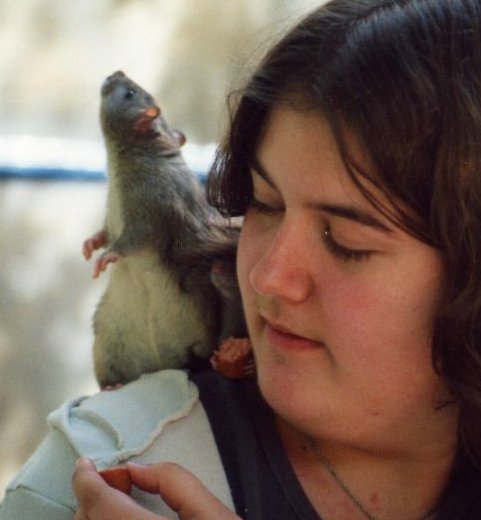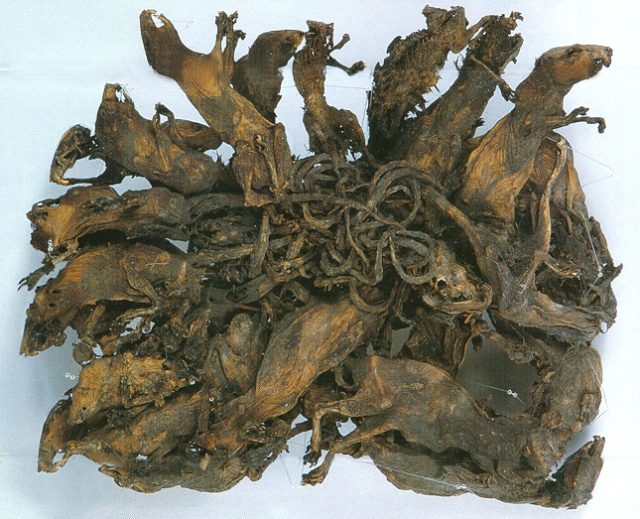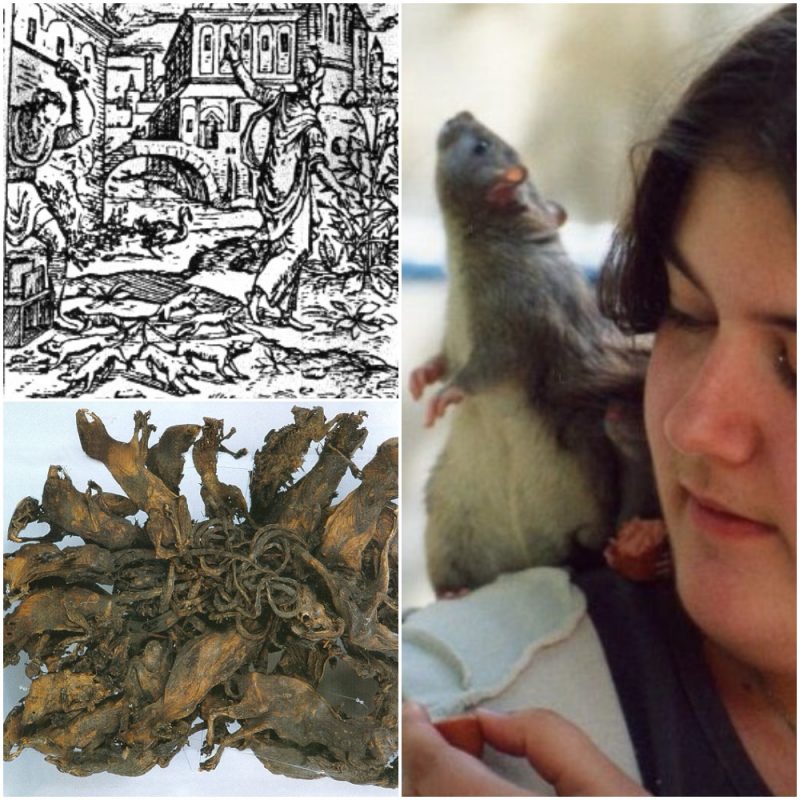Rats are known as extremely intelligent and resilient animals. Aside from spreading various diseases, lurking in the sewers, dirty basements, and dumping sites, they are able to survive the most extreme conditions such as floods, fires, and even nuclear catastrophes.
Since the late 19th century, they have been kept as pets, and they don’t pose any more of a health risk than pets such as cats or dogs. They can even be trained to perform various tricks.

A “rat king” is a rare and curious phenomenon occurring in some populations of rats. A number of rats accidentally become intertwined at the tails and are joined with blood, dirt, and excrement. The animals then grow together joined at the tails. The phenomenon mostly occurs in dirty places where rapidly growing populations of rats reach staggering numbers.
The term “rat king” originated in Germany, where the derogatory word “Rattenkonig” was used throughout the 17th and the 18th century to describe people who lived off others. The phenomenon is generally associated with Germany, where the majority of instances have been located.
The earliest occurrence of a rat king was reported in 1564 and involved 25 brown rats. Since then, most examples involved black rats, and the latest occurrence was reported in 1986 in Vendee, France. Some examples were found dead or even mummified.

Rat kings have always been a subject of fear and superstition, and historically they were seen as an extremely bad omen. This was because rats were considered as carriers of the plague, and the rat kings were often seen as the source of the disease. They were usually killed upon discovery, but sometimes a priest was brought in order to exorcise the plague.
Nowadays, rat kings can be found in many museums across the world. The Mauritanium Scientific Museum in Altenburg, Germany, exhibits the largest preserved rat king, which consists of 32 rats.

It was found in a miller’s fireplace in the village of Buchheim.
Read another story from us: The 1855 “Devil’s Footprints” mystery in Devon, England
Natural history museums in Hamburg, Göttingen, Hamelin and Stuttgart exhibit rat kings preserved in alcohol, and the Otago Museum in Dunedin, New Zealand, exhibits a rat king which consists of immature black rats whose tails were entangled by horse hair.
